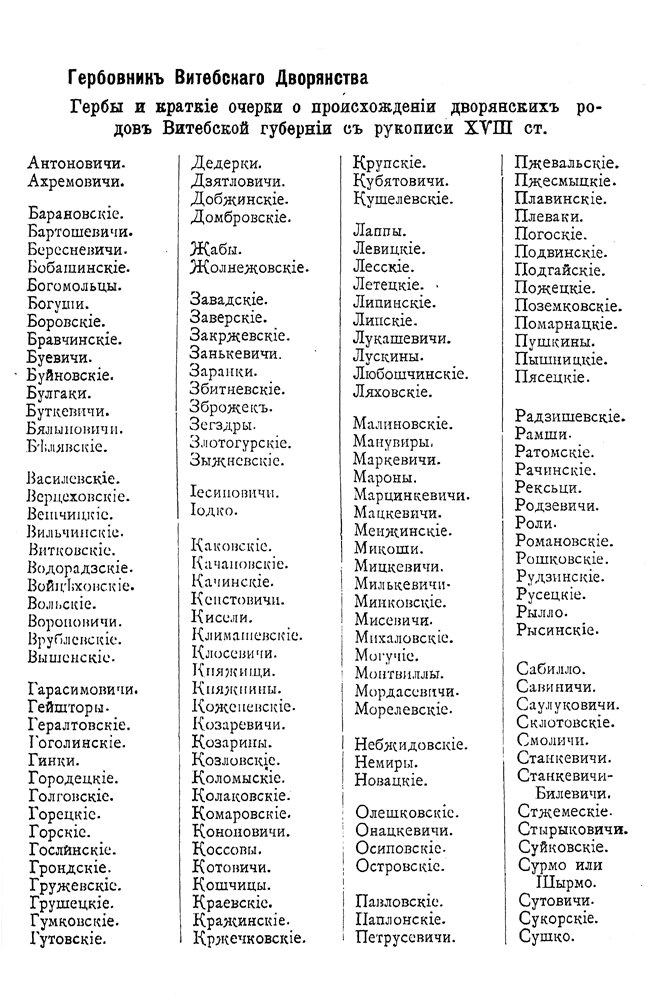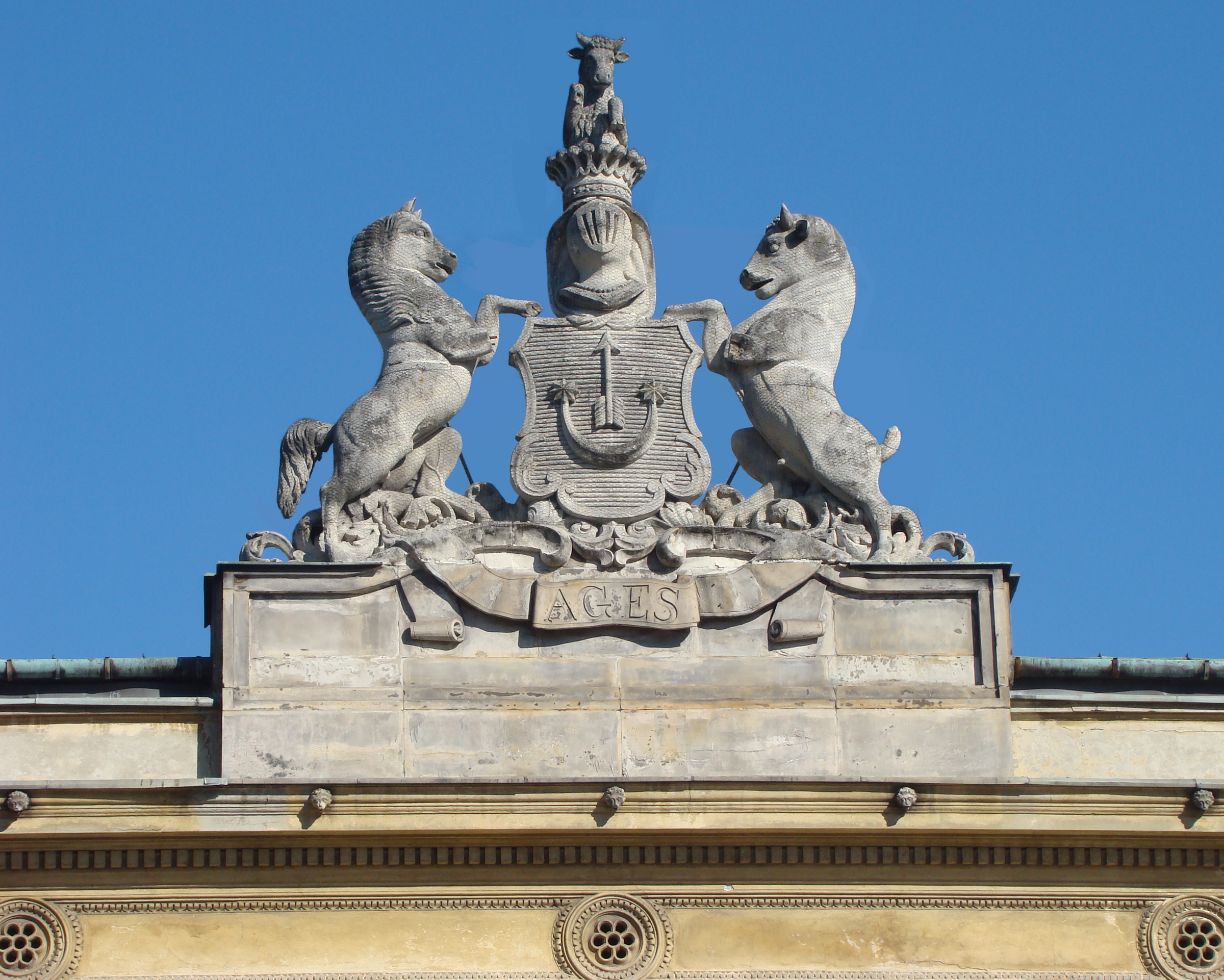|
Lew II Coat Of Arms
Lew II ( pl, Krupski,Szymon Okolski, Okolski Simone, «Orbis Poloni», Cracov, 1642 r., T.1 — S.504 (Index, Tesserae gentiliciae in regno Poloniae s M. D. Lit.) Borzyszkowski II Chadyn-Borzyszkowski, Szadaj-Borzyszkowski, Lew odmienny) - Polish coat of arms, used by several genera. Two of them were families from the region of Kashubia, Kaszuby. Coat of arms "Lew II" is a variant of the coat of arms "Leo" ( pl, Lew). Blazon Description of emblem, proposed by Alfred Znamierowski ( pl, Alfred Znamierowski): Gules lion rampant or. Crest - three ostrich feathers. Mantling gules lined or. ;Modifications: Mentioned in Hzhanski ( pl, Chrząński) differences in Tables ( pl, Tablica odmian) coat of arms "Krupski" ( pl, herb Krupskich). No color, he was quoted as Emilian Seligo-Zhernitsky ( pl, Emilian Szeliga-Żernicki), as the emblem of "Shada" and "Shadyn-Bozhishkovskih of Kashuba" ( pl, Szada- i Chadyn-Borzyszkowskich z Kaszub). Other branches of genus used a coat of arms "Bozhyshkov ... [...More Info...] [...Related Items...] OR: [Wikipedia] [Google] [Baidu] |
Krupski
Krupski ( pl, Krupski, be, Крупскі, russian: Крупский, uk, Крупський, lt, Krupskis) - Polish noble (''szlachta'') family from Eastern Europe and a common surname in modern Poland. Origin According to Latin and Polish texts, the original name was "de Krupe". A modern form of the surname appears in 15th-century Polish texts, and in 1534 a Latin text contains the name "Crupsky". In 1550, a Valery Crupski completed his studies at Cracow University.). In 19th-century Belarusian and Russian texts, the name appears as Крупскій (Крупскі) or Крупский. Surnames in the Russian Empire became standardized after the abolition of serfdom in 1861. Polish Roman Catholic bishop Jan Długosz (1415–1480), in his description of the Korczak coat of arms, identified Krupski with Korczak and the family's ethnic group as the Rusyns. The first known Krupski was diplomat and military commander Jerzy Krupski (1472–1548), who owned estates in Red Ruthen ... [...More Info...] [...Related Items...] OR: [Wikipedia] [Google] [Baidu] |
Coat Of Arms
A coat of arms is a heraldry, heraldic communication design, visual design on an escutcheon (heraldry), escutcheon (i.e., shield), surcoat, or tabard (the latter two being outer garments). The coat of arms on an escutcheon forms the central element of the full achievement (heraldry), heraldic achievement, which in its whole consists of a shield, supporters, a crest (heraldry), crest, and a motto. A coat of arms is traditionally unique to an individual person, family, state, organization, school or corporation. The term itself of 'coat of arms' describing in modern times just the heraldic design, originates from the description of the entire medieval chainmail 'surcoat' garment used in combat or preparation for the latter. Roll of arms, Rolls of arms are collections of many coats of arms, and since the early Modern Age centuries, they have been a source of information for public showing and tracing the membership of a nobility, noble family, and therefore its genealogy across tim ... [...More Info...] [...Related Items...] OR: [Wikipedia] [Google] [Baidu] |
Heraldry
Heraldry is a discipline relating to the design, display and study of armorial bearings (known as armory), as well as related disciplines, such as vexillology, together with the study of ceremony, rank and pedigree. Armory, the best-known branch of heraldry, concerns the design and transmission of the heraldic achievement. The achievement, or armorial bearings usually includes a coat of arms on a shield, helmet and crest, together with any accompanying devices, such as supporters, badges, heraldic banners and mottoes. Although the use of various devices to signify individuals and groups goes back to antiquity, both the form and use of such devices varied widely, as the concept of regular, hereditary designs, constituting the distinguishing feature of heraldry, did not develop until the High Middle Ages. It is often claimed that the use of helmets with face guards during this period made it difficult to recognize one's commanders in the field when large armies gathered together ... [...More Info...] [...Related Items...] OR: [Wikipedia] [Google] [Baidu] |
Polish Heraldry
Polish heraldry is the study of the coats of arms that have historically been used in Poland and the Polish–Lithuanian Commonwealth. It treats of specifically Polish heraldic traits and of the Polish heraldic system, contrasted with heraldic systems used elsewhere, notably in Western Europe. Due to the distinctive ways in which feudal societies evolved, Poland's heraldic traditions differ substantially from those of the German lands, France, and the British Isles. Polish heraldry is an integral part of the history of the Polish ''szlachta'' (nobility). History Unlike Western Europe, in Poland, the did not emerge exclusively from the feudal class of knights but stemmed in great part from earlier Slavic local rulers and free warriors and mercenaries. Rulers often hired these free warriors and mercenaries to form military units ( pl, Drużyna) and eventually, in the 11th century during the time of Casimir I the Restorer with the development of feudalism, armies paid by the Pri ... [...More Info...] [...Related Items...] OR: [Wikipedia] [Google] [Baidu] |
1641
Events January–March * January 4 – The stratovolcano Mount Parker in the Philippines) has a major eruption. * January 18 – Pau Claris proclaims the Catalan Republic. * February 16 – King Charles I of England gives his assent to the Triennial Act, reluctantly committing himself to parliamentary sessions of at least fifty days, every three years. * March 7 – King Charles I of England decrees that all Roman Catholic priests must leave England by April 7 or face being arrested and treated as traitors. * March 22 – The trial for high treason begins for Thomas Wentworth, 1st Earl of Strafford, director of England's Council of the North. * March 27 – **The Battle of Pressnitz begins between the Holy Roman Empire and Sweden. **The Siege of São Filipe begins in the Azores as the Portuguese Navy fights to drive the Spanish out. After almost 11 months, the Portuguese prevail on March 4, 1642. April–June * April 7 – The dea ... [...More Info...] [...Related Items...] OR: [Wikipedia] [Google] [Baidu] |
1551
Year 1551 ( MDLI) was a common year starting on Thursday (link will display the full calendar) of the Julian calendar. Events January–June * January–February – Macarius, Metropolitan of Moscow, and Tsar Ivan IV of Russia preside over the reforming Stoglavy Synod ("Hundred-Chapter") church council. A calendar of the saints and an ecclesiastical law code ('' Stoglav'') are introduced. * January 11 – Ketumati, Burma, is conquered by Bayinnaung. * May 1 – The Council of Trent reconvenes by order of Pope Julius III. * May 12 – The National University of San Marcos is founded in Lima (Peru), being the first officially established university in the Americas. July–December * By July – Fifth and last outbreak of sweating sickness in England. John Caius of Shrewsbury writes the first full contemporary account of the symptoms of the disease. * July – Invasion of Gozo: Ottoman Turks and Barbary pirates invade the Mediterran ... [...More Info...] [...Related Items...] OR: [Wikipedia] [Google] [Baidu] |
Sas (coat Of Arms)
Sas or Szász (origin: Slavic for "Saxon", Polish: ''Sas'', Hungarian: ''Szász'', Romanian: ''Saș'', Ukrainian: ''Сас'') is a Central European coat of arms. It was borne since the medieval period by several Transylvanian-Saxon Hungarian, Ruthenian, Ukrainian,Herby rycerstwa polskiego (English ''Coat of Arms of Polish Nobility''), Author: Bartosz Paprocki, Publisher: Biblioteka Polska, 1584 Kraków, reprinted 1858 Kraków, reprinted 1982 Warsaw, p. 695-697 (in Polish)/ref>ORBIS POLONUS, Tom III, (Simple English ''Armorial of Polish nobility, Volume 3''), Author: Szymon Okolski, 1641–43, Kraków, p. 195-202 (in Latin), p. 207-214 digital/ref> The house was once a mighty princely and ducal house with origins in Saxony, Transylvania, Hungary and Ruthenia. History Ancient Polish-Lithuanian historians like Szymon Okolski say that the origin of these arms is derived from Saxony, where during the mid-12th century King Géza II of Hungary invited Germanic peoples of Saxon ... [...More Info...] [...Related Items...] OR: [Wikipedia] [Google] [Baidu] |
Kashubia
pl, Kaszuby , native_name_lang = csb, de, csb , settlement_type = Historical region , anthem = Zemia Rodnô , image_map = Kashubians in Poland.png , image_flag = Kashubian flag.svg , map_caption = , coordinates = , image_shield = Kaszëbsczi Herb.png , subdivision_type = Country , subdivision_name = , subdivision_type1 = Region , subdivision_name1 = Pomerania , capital = Kartuzy , largest_city = Wejherowo , seat_type = Largest cities , seat = Gdynia, Sopot, Puck, Kościerzyna, Bytów, Kartuzy, Wejherowo, Gdańsk , timezone = CET , utc_offset = +1 , timezone_DST = CEST , utc_offset_DST ... [...More Info...] [...Related Items...] OR: [Wikipedia] [Google] [Baidu] |
PL Stanisław Teodor Chrząński-Tablice Odmian Herbowych
PL, P.L., Pl, or .pl may refer to: Businesses and organizations Government and political * Partit Laburista, a Maltese political party * Liberal Party (Brazil, 2006), a Brazilian political party * Liberal Party (Moldova), a Moldovan political party * Liberal Party (Rwanda), a Rwandan political party * Parlamentarische Linke, a parliamentary caucus in Germany * Patriotic League (Bosnia and Herzegovina) (Bosnian: ''Patriotska Liga''), a military organisation of the Republic of Bosnia and Herzegovina * Philippine Legislature, a legislature that existed in the Philippines from 1907 to 1935 * Progressive Labor Party (United States), a United States communist party Sports leagues * Premier League, the top English association football league * Pacific League, one of the two leagues in Japan's Nippon Professional Baseball * Pioneer Baseball League, a Rookie league in Minor League Baseball * Pioneer Football League, NCAA FCS conference Other businesses and organizations * Airstars Air ... [...More Info...] [...Related Items...] OR: [Wikipedia] [Google] [Baidu] |
1642
Events January–March * January 4 – First English Civil War: Charles I attempts to arrest six leading members of the Long Parliament, but they escape. * February 5 – The Bishops Exclusion Act is passed in England to prevent any member of the clergy from holding political office. * February 15 – Endymion Porter is voted to be a "dangerous counsellor" by the English parliament. * February 17 – The Treaty of Axim is signed between the Dutch West India Company and the chiefs of the Nzema people in what is now the African nation of Ghana. * February 18 – A group of Protestant English settlers in Ireland surrender to Irish authorities at Castlebar in County Mayo in hopes of having their lives spared, and are killed one week later on orders of Edmond Bourke. * February 20 – The Treaty of The Hague, between the Dutch Republic and the Kingdom of Portugal, is ratified by the Republic's States-General. * February 22 – The ... [...More Info...] [...Related Items...] OR: [Wikipedia] [Google] [Baidu] |
Szymon Okolski
Szymon Okolski (1580–1653), also known as Simon Okolski, was a well-known Polish–Lithuanian historian, theologian, and specialist in heraldry. His own clan and coat of arms were that of Rawicz. He was born in Kamieniec Podolski, died in Lviv. He headed chairs of theology in Lviv and Bologna. A member of the Dominican Order, in 1641 he became a superior of the Dominican monastery in Kamieniec Podolski. In 1648 Okolski accepted the post of the ''prowincjał'' (province leader) of the Dominican Order in the Polish–Lithuanian Commonwealth-controlled Ruś territories. The center of the province was located in Lwow. In 1637-38 Okolski accompanied Crown hetman Mikołaj Potocki during his neutralization of rebellious Cossacks driven by Jakub Ostrzanin and Dmytro Hunia. Being a witness and a direct participant of those developments, Okolski gave a detailed description of them in his field diaries. The latter were published immediately and became a valuable source of information ... [...More Info...] [...Related Items...] OR: [Wikipedia] [Google] [Baidu] |



.jpg)




